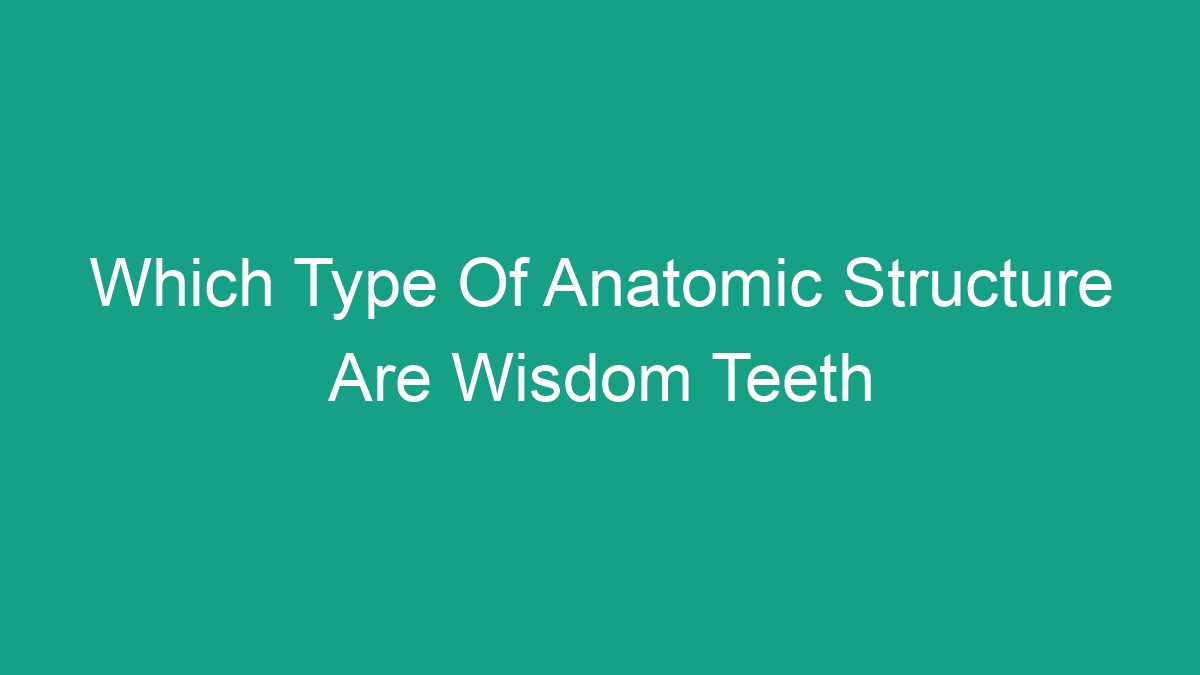
Wisdom teeth, also known as third molars, are the last set of molars to emerge in the mouth. These teeth typically appear in late adolescence or early adulthood, and their arrival is often accompanied by a host of questions and concerns. In this article, we will explore the anatomic structure of wisdom teeth and what they mean for dental health.
The Anatomy of Wisdom Teeth
Wisdom teeth are classified as molars, which are large, flat teeth at the back of the mouth. They are designed for grinding food, much like the other molars in the mouth. However, unlike the other molars, wisdom teeth are not always needed for proper chewing and therefore are sometimes removed.
Wisdom teeth are unique in that they are the last teeth to emerge in the mouth, often not appearing until the late teens or early twenties. Because of their late arrival, there is often limited space in the mouth for these teeth, leading to a host of potential problems.
The Role of Wisdom Teeth in the Mouth
Historically, wisdom teeth served a functional purpose for our ancestors. Early humans had larger jaws that could accommodate the extra set of molars, which helped them grind down tough, unprocessed plant material. However, with changes in diet and evolution, the need for wisdom teeth has diminished in modern humans.
Today, wisdom teeth are often considered vestigial structures, meaning they are no longer necessary for survival. In fact, many people do not have enough room in their mouths for these extra teeth, leading to issues such as impaction, crowding, and infection.
Problems Associated with Wisdom Teeth
- Impaction: One of the most common problems associated with wisdom teeth is impaction. This occurs when the teeth do not have enough room to emerge properly, causing them to become trapped beneath the gum line. Impacted wisdom teeth can lead to pain, swelling, and infection.
- Crowding: The late emergence of wisdom teeth can also lead to crowding issues in the mouth. As these teeth push their way through the gums, they can force the other teeth out of alignment, leading to bite problems and potential orthodontic issues.
- Infection: Because of their location at the back of the mouth, wisdom teeth can be difficult to keep clean. This makes them susceptible to decay and infection, which can spread to the surrounding teeth and gums.
Diagnosis and Treatment
If you are experiencing pain or discomfort in the back of your mouth, it is important to visit a dentist for an evaluation. They will be able to assess the position of your wisdom teeth using X-rays and determine if they need to be removed.
Extraction: In many cases, wisdom teeth are removed preventatively to avoid potential problems. This procedure is typically performed by an oral surgeon and involves the use of sedation to minimize discomfort.
Monitor: In some cases, wisdom teeth may be monitored over time to see if they cause any issues. Regular dental check-ups can help identify potential problems early on and prevent them from worsening.
Conclusion
Wisdom teeth are a unique anatomic structure that often causes more harm than good in modern humans. While they served a functional purpose in the past, the evolution of our diets and jaw sizes has made them largely unnecessary. If you are experiencing pain or discomfort in the back of your mouth, it is important to seek the advice of a dental professional to determine the best course of action.
FAQs
Q: Do all people have wisdom teeth?
A: No, not everyone develops wisdom teeth. Some people may only develop one or two, while others may not develop any at all.
Q: Can wisdom teeth cause headaches?
A: Yes, impacted wisdom teeth can cause headaches, especially if they are pressing on surrounding teeth or nerves.
Q: How long does it take to recover from wisdom teeth extraction?
A: Recovery time varies from person to person, but most people are able to resume normal activities within a few days to a week.



